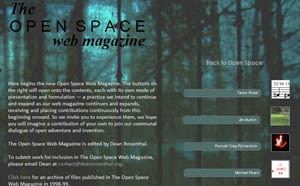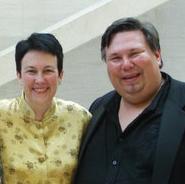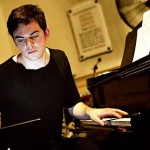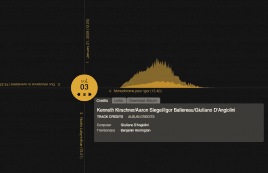
Gamma Graves
Ecstatic Peace Cassette
Gamma Graves is a prime example of the kind of release that has helped to fuel the cassette resurgence on the indie/experimental music scene. Produced by a variety of sources, from bedroom DIY collectives and small tape-only labels to established imprints like Ecstatic Peace, the audio cassette format, long thought extinct, is back. Tapes have been unassumingly encroaching their way onto the shelves of connoisseur collectors and music critics (no less than Steve Smith is a devotee): even record sellers such as Insound and Other Music have made room for them again.
The Brooklyn triumvirate of synthesizer performers Nathan Cearley and Erica Bradbury and prepared guitarist Casey Block comprise Long Distance Poison. Armed with vintage gear by Moog, Arp, and Roland, they create experimental soundscapes with a sense of history, referencing everyone from David Borden and early Philip Glass to Keith Rowe, Alva Noto, Ryoji Ikeda, and Derek Bailey. Drone-based foundations are overlaid with coruscating ostinato loops and distressed with pointed interjections.
Gamma Graves is the type of music that would have been just fine to distribute digitally (or via CD). Indeed, some purists might argue that cassette is an inherently inferior audio format to hi-res digital played through good equipment (by no means do most consumers play their MP3s through good equipment). So, why do I like having it on cassette? I find the noise imparted by tape and deck to do no harm to this music: in fact, it adds another, subtle, layer of drones to the proceedings that is consonant with the musical intentions of the work.
The tape as artifact yields something important too. Limited runs of handmade cassettes are often lovingly attired with artwork more expansive and, obviously, more tangible than any JPEG can provide. They are a reminder of a bygone era in which the physical release WAS the release, in which tape-trading with 最高のオンラインカジノ benefits and digging in bins for rarities was a hobby to enthusiastically pursue: not something simulated in online forums and furtively grasped at brick and mortar outposts now few and far between. Long Distance Poison (and Ecstatic Peace) acknowledge their debt to history not only via musical reference points, but through the resonances found in a cassette as relic and artwork. Try finding all that in a computer file.






 Composer
Composer 
 While online culture increasingly favors a posture of transparent, even mundane personhood, Igor Ballereau and Jody Pou buck this trend with the enigmatic netlabel
While online culture increasingly favors a posture of transparent, even mundane personhood, Igor Ballereau and Jody Pou buck this trend with the enigmatic netlabel